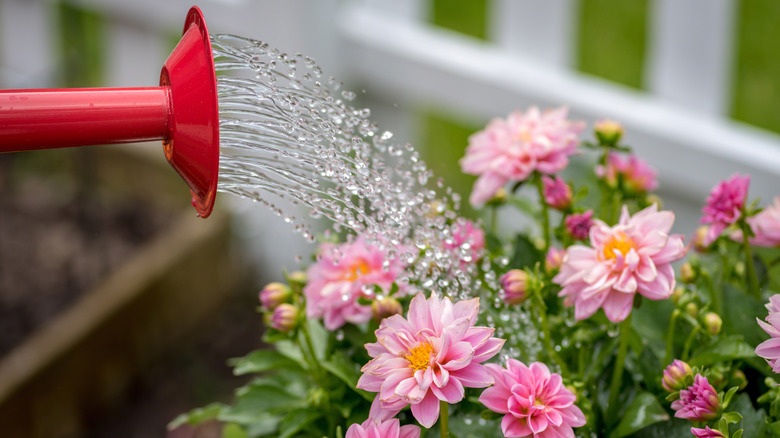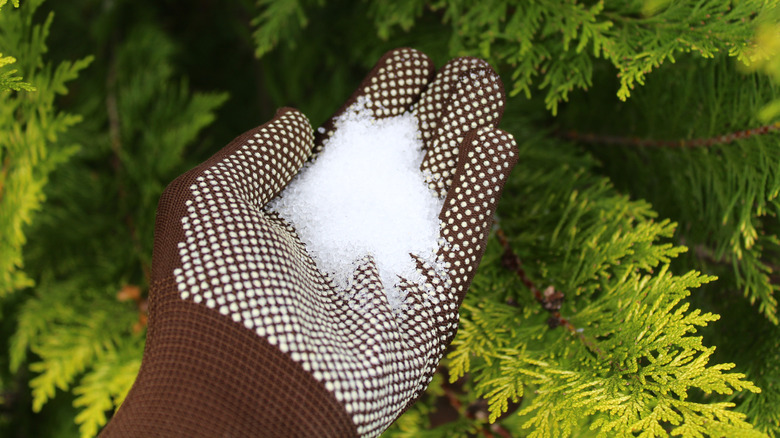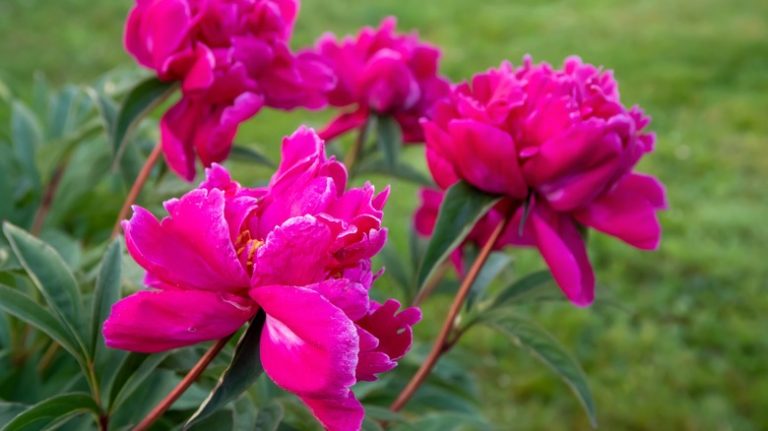If you are a gardener and love the joy of growing fresh flowers right in your backyard, you’ve likely experienced the occasional disappointment of poor flower blooms. In particular, dahlias may experience dull blooms or produce few flowers due to various factors, some of which may be in your control. Insufficient sunlight is a common culprit, as dahlias require full sun exposure for optimal growth and flowering. Poor soil conditions, lacking essential nutrients, especially phosphorus and potassium, can hinder bloom development as well. Inadequate watering, whether too much or too little, may stress the plants and impact their ability to produce vibrant blooms. Additionally, overcrowding and insufficient spacing can lead to competition for resources among plants, resulting in reduced flower production. Nevertheless, many of these issues can easily be remedied by thoughtful care of your dahlias. If your watering and sunlight are sufficient, it’s possible that your dahlias are suffering from a lack of nutrients in the soil and that can be fixed with the addition of Epsom salt.
Epsom salt is an affordable and naturally-occuring mineral salt that has a number of benefits in your garden. One of them is enriching the nutrients of your soil with little effort. Before you click “add to cart,” it may be a good idea to invest in a soil test first. It’s important to determine whether your soil is truly in need of amendments in order to make your dahlias thrive and ultimately figure out what they’re lacking.
How to incorporate Epsom salt into your soil

To give your dahlias a jumpstart, you can incorporate Epsom salt into your gardening routine once you’ve determined your soil is in need of a magnesium boost. To feed your dahlias with Epsom salt, it’s best to first do this upon planting your flower bulbs. Repeat the Epsom salt watering again in early spring when your plants are developing their first sets of leaves and a final time when the blooms are developing. To do so, the American Dahlia Society recommends mixing one tablespoon of Epsom salt with a gallon of water and applying the solution around the base of your plants, avoiding the leaves as it can lead to fungal or bacterial infections. They also recommend frequency over potency to protect the plants from over-fertilization.
Another way you can help your dahlias with Epsom salt is by mixing it directly into your soil. To do so, the Epsom Salt Council suggests sprinkling 1 cup of the salt per 100 square feet before planting. Though there seems to be more support for incorporating Epsom salt into the garden by diluting it in water, on her blog, Martha Stewart also endorses sprinkling a little Epsom salt for her annual dahlia planting. She believes, “Epsom salt will feed and nourish the growing dahlia bulbs and help increase the vibrancy of the flowers.”
Why Epsom salt works well

Epsom salt, chemically known as magnesium sulfate, is a popular and effective remedy for enhancing the health of dahlias and other plants like roses in gardens. Dahlias, like many plants, require magnesium for various growth processes, and Epsom salt serves as a readily available source of this essential nutrient. According to the National Institute of Health, magnesium is a key component of chlorophyll, the pigment responsible for photosynthesis, and aids in the activation of enzymes crucial for nutrient absorption and energy transfer within the plant.
Applying Epsom salt to dahlia plants benefits them in several ways. First, magnesium plays a vital role in the formation of robust, green leaves and stems. It promotes chlorophyll synthesis, leading to increased photosynthesis and improved energy production. This results in lush foliage and vibrant, healthy growth. Secondly, magnesium facilitates the uptake of essential nutrients, such as phosphorus and nitrogen, enhancing overall nutrient absorption and utilization by the dahlias. Lastly, Epsom salt can contribute to the prevention of certain common issues like yellowing leaves, a sign of magnesium deficiency.
While Epsom salt can have tremendous benefits, adding too much to soil can be dangerous for plants as it leads to over-fertilization. Excessive levels of magnesium from Epsom salt can disrupt the balance of nutrients, hindering the absorption of other essential elements. This imbalance may cause deficiencies or toxicity, manifesting as yellowing leaves or stunted growth. Careful and measured application is crucial to prevent adverse effects on soil and plant well-being.



